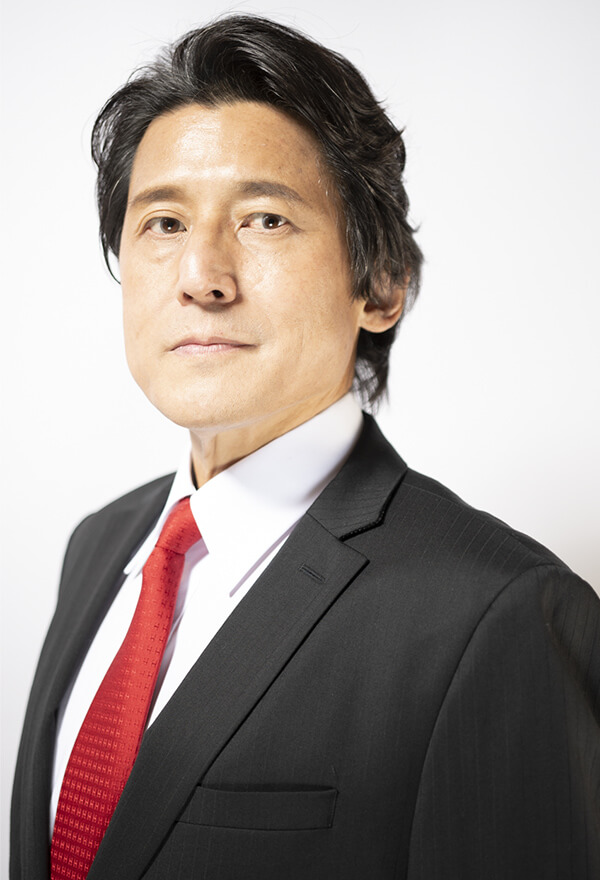

It was the movie “An Inconvenient Truth” by a former vice president of the United States, Al Gore, which raised my awareness about global environmental issues and seriously made me consider that we need to take an action. As I age and became a parent myself, I began to constantly think about how I could make meaningful use of “my time left” and what I could leave behind for my children.
As symbolised by the SDGs adopted at the UN Summit in 2015 and “Paris Agreement” at the UNFCCC Conference of the Parties (COP) which is responsible for discussing the international agreements on greenhouse gas mitigation, an international awareness of the significant and urgent issues on global environment is growing. However, there were many companies and organisations which did not take the necessary action, excusing themselves as calling such environmental actions as “propaganda,” which triggered me a profound sense of crisis.
However, as some big global companies have stareted to take painful and effective actions, even in the field of IT business venture which I am familiar with, people started to “take action”; a legendary venture capitalist, Mr. John Doerr, donated 150 billion yen to newly establish a sustainability-related department at Stanford University, being a green tech evangelist, and Mr. Bill Gates called for the establishment of a 130 billion yen fund named Breakthrough Energy.
As these “actions” stareted to give me a kick in the back, I came across the microalga, Galdieria sulphuraria.
Galdieria is a red alga which inhabits hot sulphur springs such as Kusatsu Onsen and has existed on the earth by a billion years ago. It survives in harsh environments such as high temperatures, high acidity, high concentrations of CO2 and in the presence of sulphur oxides (SOx) and nitrogen oxides (NOx). They grow autotrophically in the presence of light and grow heterotrophically with nutrients in the absence of light.
These characteristics enable industrial-level high cultivation efficiency as well as low-cost production.
Galdieria is able to selectively and throughly collect precious metals such as gold (Au) and palladium (Pd) from dilute metal solutions and adsorb on the cell surface, displaying higher performance than the existing technologies (ion exchange resins, activated charcoal, etc.).
n addition, the cell contents include a variety of nutrients and useful substances as is the case for the other microalgae, which can be applied as food, cosmetics, dyes and other products.
In other words, Galdieria has a potential to contribute and provide a holistic solution to globally significant issues such as improving the efficiency of precious metal recycling at urban mines, eliminating mercury damage at overseas gold mines, overcoming food problems and reducing CO2 emissions.
We will challenge every day for realisation of a harmonious future among people, nature and the earth by harnessing the power of a unique microalga the mother earth has given a birth to.
At the same time, we aim to create an attractive and unprecedented corporate entity where each and every one of us can develop and flourish with a sense of responsibility and professionalism in each field.
We are a deep tech venture with a mission of “establishing an optimal ecosystem for the earth and all living organisms,” which aims to achive a circulating society by harnessing the power of extremophilic algae.
We contribute positively to achive some of the 17 SDGs as stated below.

We believe our environment-concious precious metal adsorbent can contribute to sustainability providing solutions to a wide range of social issues.
Of all others, the working conditions at artisanal and small-scale gold mining (ASGM) in Asia and South America are next to health hazards.
People without proper knowledge on mercury including child laborers work there, handling it with bare hands and evapourating it with burners.
The workers are forced to choose working at ASGM for their family lives and children’s education, knowing the potential health risks.
In addition, the areas that have been exhausted are deserted and new areas are mined, leaving serious soil contamination with mercury behind which is causing significant environmental damage in the surroundings.
The cyanide process, a so-called legitimate method, requires a high initial investment cost and cannot be adopted at ASGM compelling the workers to live with a negative cycle of poverty and environmental poisoning.
Along with the development of precious metal adsorbent derived from Galdieria, we have succeeded in developing a gold recovery process from ores that can be applied to ASGM.
This new gold recovery process allows the ASGM operators to safely extract gold from ore without using mercury.
Using our technology, we aim to eliminate the cycle of environmental pollution which poses negative effects in the future by contributing to sustainability of the people involved in ASGM in Southeast Asia, Africa, and South America.
After starting his professional career at Booz Allen Hamilton, where he worked for five years, Mr. Tanimoto moved to Silicon Valley and conducted international business expansion services to startups for six years. In year 2000, he moved back to Tokyo and founded Realcom, Inc., an enterprise software company and did IPO in 2007 at the Tokyo Stock Exchange. After leaving Realcom, Mr. Tanimoto founded TENEX, Co. and assisted entrepreneurs as an angel investor and a mentor.
In 2015, he co-founded Galdeira, Co., Ltd and now he leads the company as CEO.
He received an MBA from Keio Business School in Tokyo and completed exchange student program at the Wharton School, University of Pennsylvania. He also completed executive program at The Lee Kuan Yew School of Public Policy.
Member of MENSA Japan and summited Denali in 2014.
At PASCO Corporation, Mr. Fukuta dealt with GIS (Geographic Information Systems) based on map analysis and information sharing from proposing to implementing. Mr. Fukuta has developed various methods using maps as perspective of data in marketing systems for private companies which include municipal urban planning, water supply and sewage management systems. Based on his experience, Mr. Fukuta moved on to the IT industry where he focused on corporate information sharing while handling full-stack tasks from networking to application development. At Realcom Inc., Mr. Fukuta experienced project management for multimillion-dollar projects that connected headquarters and agencies in the insurance industry. He also took charge of business development, primarily launching its cloud service. Mr. Fukuta then moved to Japan Business Systems, Inc., was involved in the launch of an alliance with Microsoft, managed hundreds of people in the Department, performed KPI management and service development, realising the impact of technology on society. Believing that Galdieria, a product which transcends words, could achieve nonlinear growth from Japan, Mr. Fukuta joined Galdieria, Co., Ltd.. Here he, as Director of the Business Development, pushes forward major projects such as NEDO, conducts Proof-of-Concept experiments with clients and collaborates with researchers to create cultivation facilities and products, facilitating business development with the need of the markets and technological development.
Eri graduated International Christian University as B.A. majoring in organic chemical synthesis. Eri then switched over to biology, moved to UK and obtained Ph.D. in plant science researching hormone interaction in Arabidopsis at University of East Anglia. She moved to Canada and worked on annual nitrogen circulation and defence response in conifers at University of Alberta as a postdoctoral fellow.
In 2011, Eri moved back to Japan and spent nine years as Postdoctoral Researcher and Research Scientist at the Environmental Response Research Unit, RIKEN Center for Sustainable Resource Science (former Plant Science Center). Her research in RIKEN focused on cesium uptake mechanism and phytoremediation in land plants and salt tolerance mechanism in Neopyropia(Rhodophyta).
In 2019, she joined Galdieria and is involved in dissection of metal adsorption mechanism, seeking market potential of cell content and so on.
Mr. Okahashi is the founder and Managing Partner of Miyako Capital
He currently manages three funds consisting of $170M in assets and in more than 30 companies, mainly seed/early-stage, high-tech startups in Japan, the US, Taiwan, and Israel.
Before founding Miyako Capital, Mr. Okahashi worked with Mitsui Sumitomo Insurance Venture Capital and the Boston Consulting Group. He was also employed at the Ministry of Economy, Trade, and Industry (METI) and formulated various government policies to enhance entrepreneurship and develop venture capital investments.
Mr. Okahashi earned a Bachelor of Economics at the University of Tokyo and an MBA from Columbia Business School
Mr. Kenyu Hosoya graduated from Hitotsubashi University with a degree in Economics and joined The Industrial Bank of Japan, Ltd., where he specialized in trading U.S. Treasury bonds and various derivatives, as well as managing system maintenance and operations. He later transitioned to Digital Garage, Inc. during its formative years, contributing significantly to the organizational structure before its IPO. In 2004, Mr. Hosoya moved to Cybozu, Inc., taking on the role of Executive Vice President and Director of the Management Department. As CFO, he was instrumental in the company’s rapid growth and its elevation to the First Section of the Tokyo Stock Exchange (now the Prime Market). He subsequently assumed leadership at NIKKATSU CORPORATION in 2007, overseeing business strategy planning and capital policy. In 2016, he joined Energy & Environment Investment, Inc., a venture capital firm focused on the environmental and energy sectors, and continues to serve as a director. Additionally, he holds part-time directorships at H2L, Inc. and Active and Company Ltd., and LiLz Inc. In March 2024, Mr. Hosoya was appointed as a director of our company.
Dr. Maru is the founder and CEO of Leave a Nest Group.
He founded Leave a Nest Co., Ltd. in 2002, which has become the leading science bridge communication company in Japan.
Dr. Maru is the technical advisor for Euglena Co., Ltd., one of the most successful algae technology company with $1bn valuation at Tokyo Stock Exchange Market.
He is also an innovator who has been involved in launching more than 78 startups. At the same time, he is holding the role as co-founder of Real Tech Fund and science evangelist of Drone Fund.
Dr. Maru earned a Doctorate degree at the Graduate School of Agriculture and Life Sciences, the University of Tokyo.
| Company name | Galdieria, Co., Ltd. |
|---|---|
| Location | 2-4-2-709 Nihonbashi Hamacho, Chuo-ku, Tokyo 103-0007, Japan |
| Representative | Tadashi Tanimoto, Representative Director and CEO |
| Capital | 269,449,295yen |
| Date of establishment | October 1, 2015 |
| Business description |
|
| Tsurumi Lab | LVP Bld.2-106, 75-1 Ono-cho, Tsurumi-ku, Yokohama 230-0046, Japan [ Access ] |